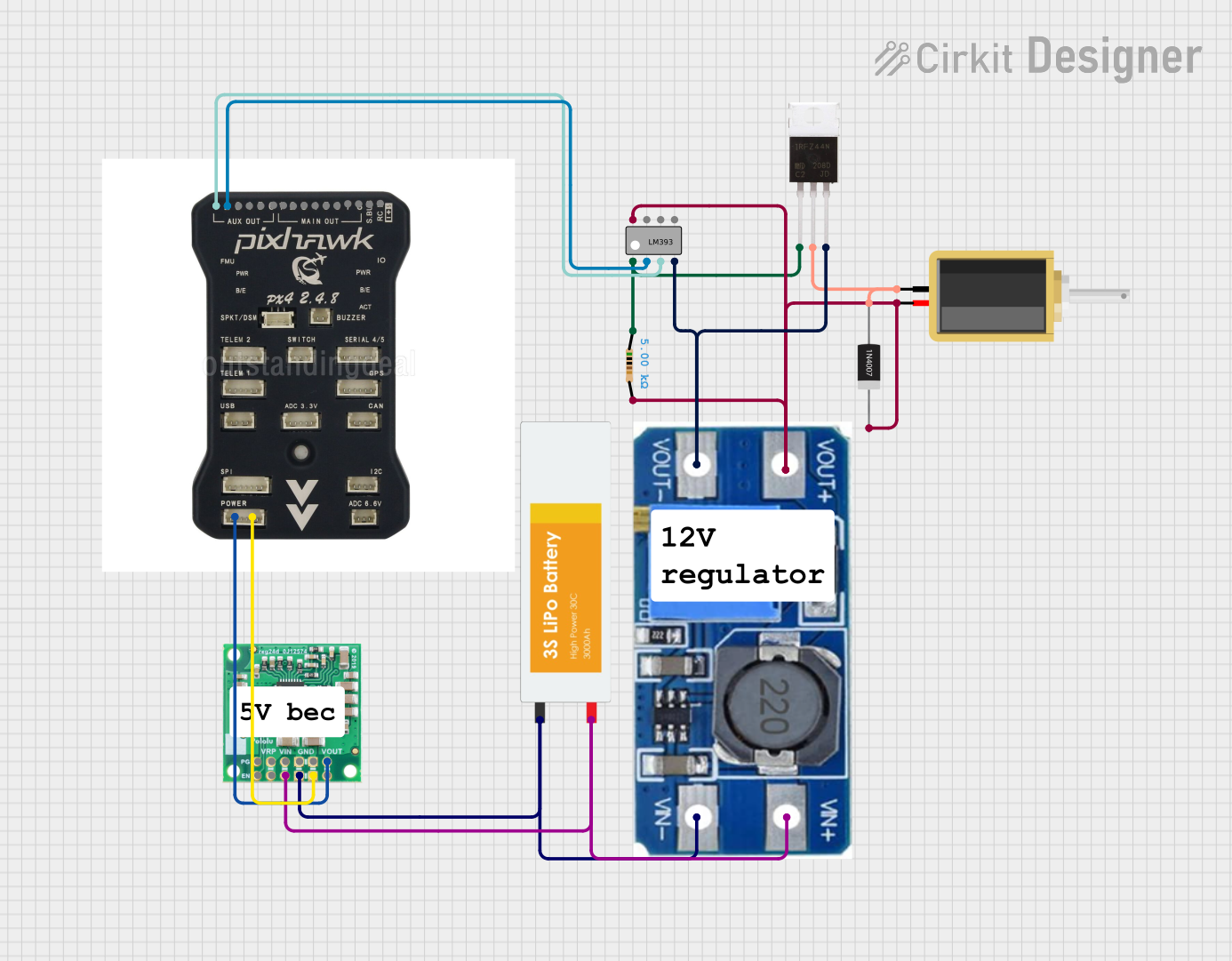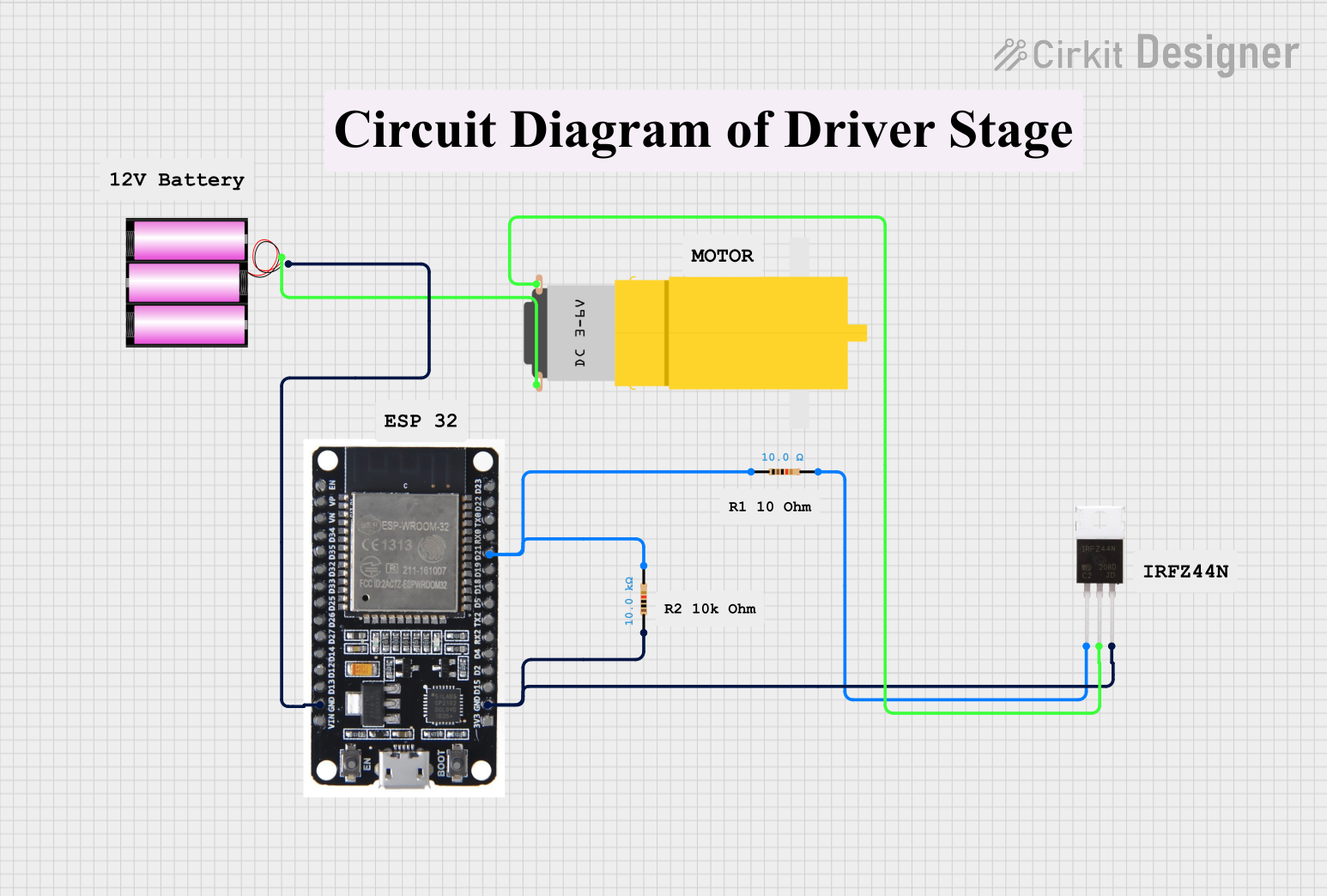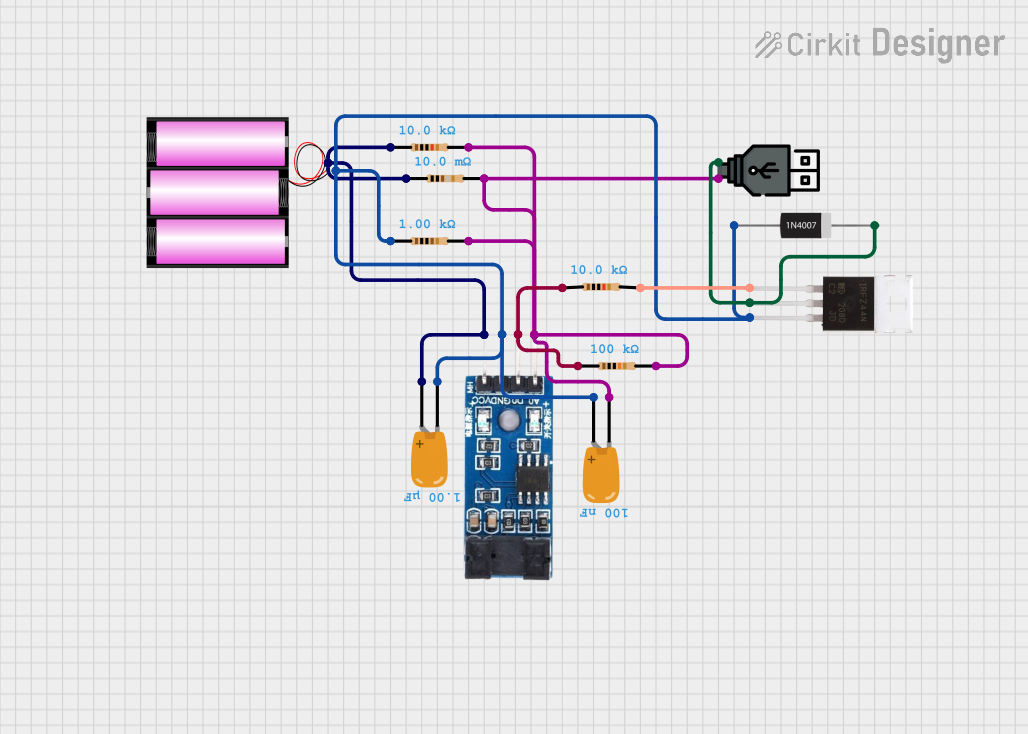
How to Use MOSFET gate IRF9540N: Examples, Pinouts, and Specs

 Design with MOSFET gate IRF9540N in Cirkit Designer
Design with MOSFET gate IRF9540N in Cirkit DesignerIntroduction
The IRF9540N is a P-channel MOSFET manufactured by BOJACK. It is widely used for switching and amplification in electronic circuits. This component is known for its low on-resistance and high current handling capability, making it ideal for power management applications. Common use cases include motor control, power supplies, and load switching.
Explore Projects Built with MOSFET gate IRF9540N

 Open Project in Cirkit Designer
Open Project in Cirkit Designer
 Open Project in Cirkit Designer
Open Project in Cirkit Designer
 Open Project in Cirkit Designer
Open Project in Cirkit Designer
 Open Project in Cirkit Designer
Open Project in Cirkit DesignerExplore Projects Built with MOSFET gate IRF9540N

 Open Project in Cirkit Designer
Open Project in Cirkit Designer
 Open Project in Cirkit Designer
Open Project in Cirkit Designer
 Open Project in Cirkit Designer
Open Project in Cirkit Designer
 Open Project in Cirkit Designer
Open Project in Cirkit DesignerTechnical Specifications
Key Technical Details
| Parameter | Value |
|---|---|
| Manufacturer | BOJACK |
| Part ID | IRF9540N |
| Type | P-Channel MOSFET |
| Drain-Source Voltage (Vds) | -100V |
| Gate-Source Voltage (Vgs) | ±20V |
| Continuous Drain Current (Id) | -23A |
| Power Dissipation (Pd) | 140W |
| Rds(on) | 0.117Ω |
| Package | TO-220 |
Pin Configuration and Descriptions
| Pin Number | Pin Name | Description |
|---|---|---|
| 1 | Gate | Controls the MOSFET switching |
| 2 | Drain | Current flows from drain to source when MOSFET is on |
| 3 | Source | Current flows to the source when MOSFET is on |
Usage Instructions
How to Use the IRF9540N in a Circuit
Connecting the MOSFET:
- Gate (Pin 1): Connect to the control signal (e.g., from a microcontroller).
- Drain (Pin 2): Connect to the load (e.g., motor, LED).
- Source (Pin 3): Connect to the negative terminal of the power supply.
Driving the MOSFET:
- Apply a voltage lower than the source voltage to the gate to turn the MOSFET on.
- Ensure the gate voltage does not exceed ±20V to avoid damaging the MOSFET.
Example Circuit:
+V (Power Supply) | | Load | |---- Drain (Pin 2) | Source (Pin 3) | | GND | | Gate (Pin 1) | | Control Signal (e.g., from Arduino)
Important Considerations and Best Practices
- Heat Dissipation: Ensure adequate heat sinking to manage power dissipation.
- Gate Resistor: Use a gate resistor (e.g., 10Ω) to limit inrush current and protect the gate.
- Flyback Diode: For inductive loads, use a flyback diode to protect against voltage spikes.
Example Code for Arduino UNO
// Example code to control IRF9540N with Arduino UNO
const int gatePin = 9; // Pin connected to the gate of the MOSFET
void setup() {
pinMode(gatePin, OUTPUT); // Set the gate pin as an output
}
void loop() {
digitalWrite(gatePin, LOW); // Turn on the MOSFET (P-channel)
delay(1000); // Wait for 1 second
digitalWrite(gatePin, HIGH); // Turn off the MOSFET
delay(1000); // Wait for 1 second
}
Troubleshooting and FAQs
Common Issues and Solutions
MOSFET Not Turning On:
- Solution: Ensure the gate voltage is sufficiently lower than the source voltage.
Excessive Heating:
- Solution: Check for adequate heat sinking and ensure the MOSFET is not exceeding its power dissipation rating.
Gate Damage:
- Solution: Use a gate resistor and ensure the gate voltage does not exceed ±20V.
FAQs
Q1: Can I use the IRF9540N for high-frequency switching?
- A1: Yes, but ensure proper gate drive circuitry to handle the switching speed.
Q2: What is the maximum current the IRF9540N can handle?
- A2: The IRF9540N can handle a continuous drain current of -23A.
Q3: Do I need a heatsink for the IRF9540N?
- A3: Yes, a heatsink is recommended for high power applications to manage heat dissipation.
This documentation provides a comprehensive guide to using the IRF9540N P-channel MOSFET. Whether you are a beginner or an experienced user, following these guidelines will help you effectively integrate this component into your electronic projects.